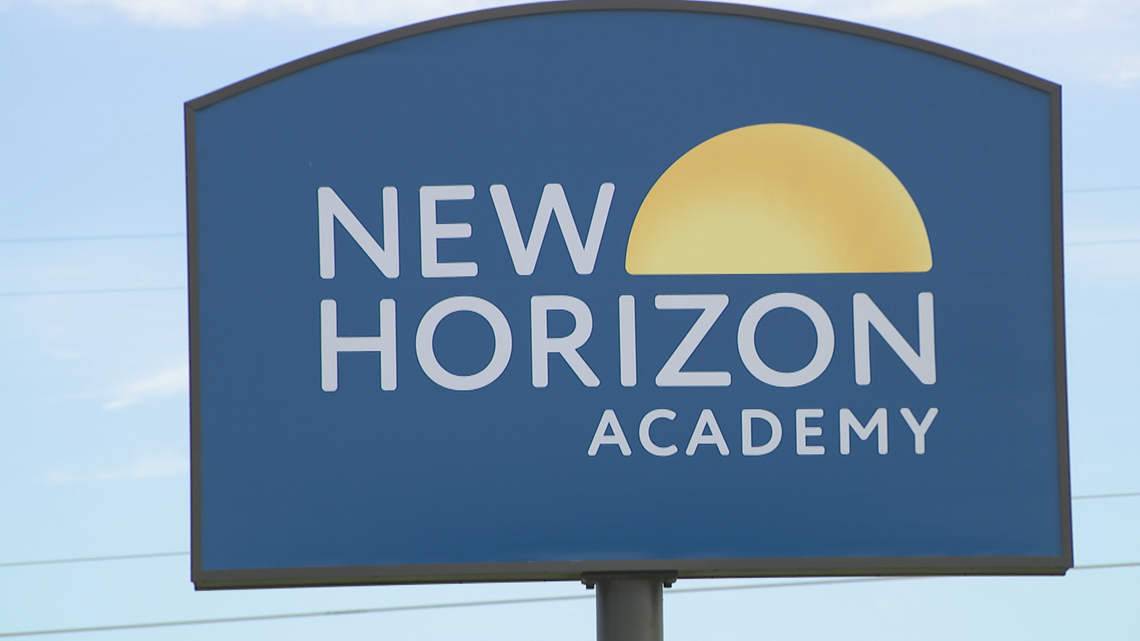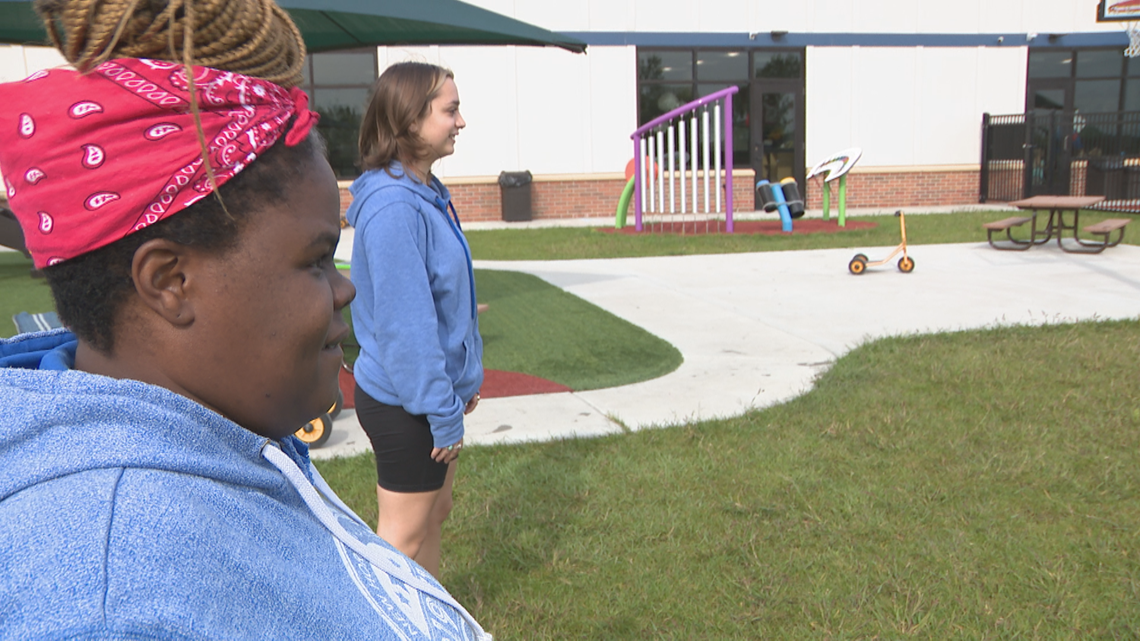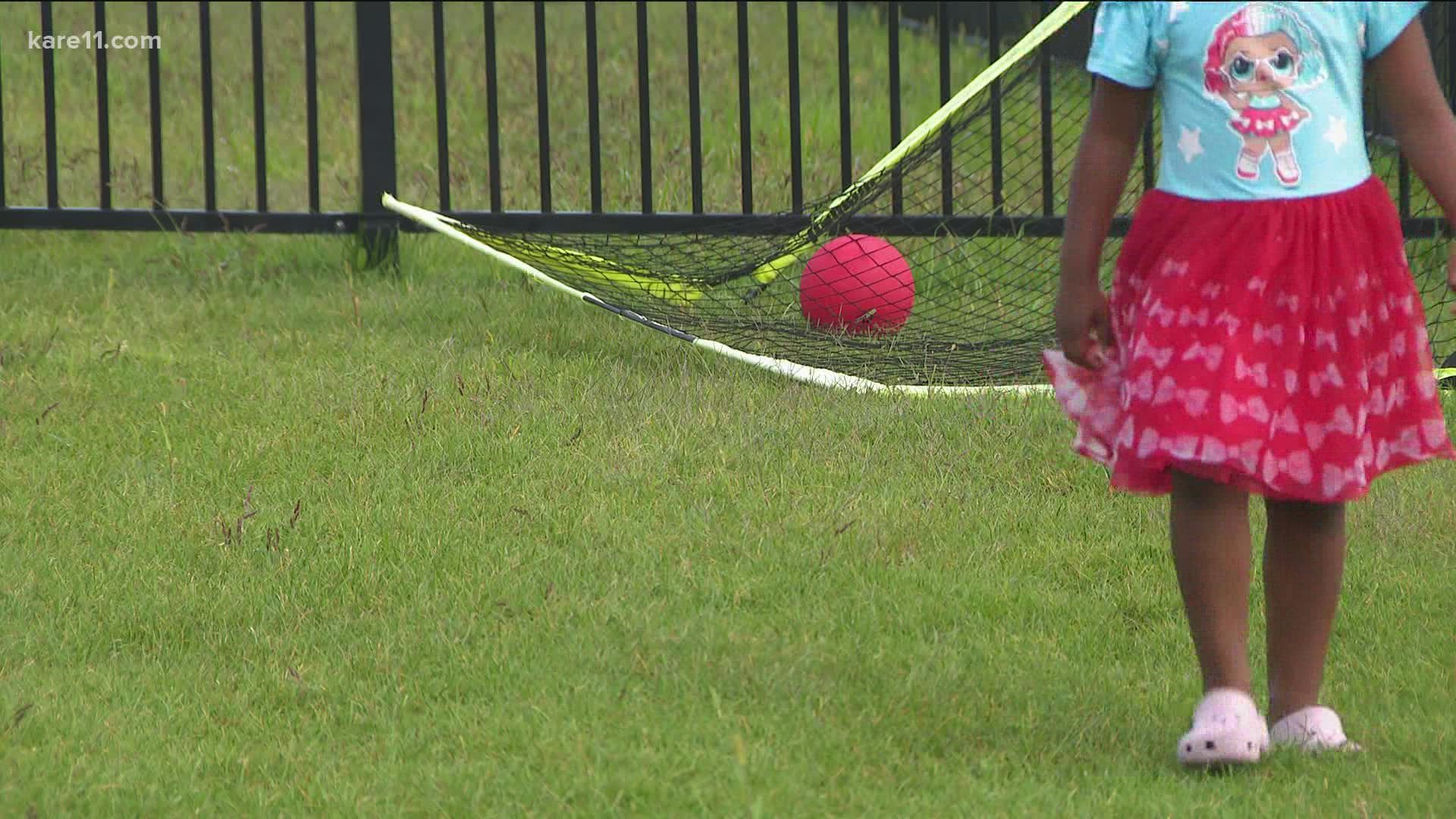SHAKOPEE, Minn. — Brianna Wiesner considers herself lucky.
The health care worker and mother of a three-year-old and three-month-old has been able to count on reliable child care throughout the pandemic. Both of her kids attend New Horizon Academy in Shakopee, where Wiesner has been pleased with the friendly staff and strong communication.
"It's just been like a godsend for us," Wiesner said. "It's just a complete load off my shoulders. I already have so much other stuff that I'm worried about at work."
Sophia Pearson, a financial analyst and mother of two, said New Horizon has been a lifeline for her family, too.
But as she prepares for a return to in-person work this fall, Pearson knows she will face logistical difficulties.
"For my younger child, it will be the same. My older one, I need to figure out before and after school programs," she said. "There will be many challenges and sacrifices."
New Horizon's location in Shakopee has kept its doors open, along with the vast majority of child care providers across the state of Minnesota during the pandemic. Indeed, this state has been lucky, too, compared to other states where plummeting enrollment has forced facilities to close left and right.


But under the surface, there are significant challenges within the child care industry in Minnesota. Clare Sanford, the government relations chair for the Minnesota Child Care Association, described the situation as "still pretty precarious." Enrollment, she said, dropped about 70% when the pandemic first hit in the spring of 2020.
Those numbers have bounced back some, but not all the way, leaving providers with a major revenue hole.
"If children aren't coming, we're not getting paid," Sanford said. "And it's very difficult to pay your staff and your mortgage, and things like that, to make sure child care survives."
Now, with more parents returning to the office in the fall, there are widespread staffing shortages at child care facilities in Minnesota, mirroring trends across the country. In late July, the National Association for the Education of Young Children released a survey showing that 4 out of 5 child care centers reported a shortage of staff, with 15 percent describing the situation as a "major shortage."


"We, unfortunately, in child care centers across the state, have classrooms that aren't open. They're there, ready to serve kids and families, but we don't have the staff," Sanford said. "There are many places across the state right now where families are seeking child care and unfortunately being told, 'no.'"
In Greater Minnesota especially, the pandemic has exacerbated existing child care shortages.
Marnie Werner, the Vice President of Research and Operations at the Center for Rural Policy Development, has researched the topic extensively. Earlier this year, she wrote that "to fix child care and not just continue to patch it, we may need something akin to a Marshall Plan, which will require concentrated focus, a lot of money, and a great deal of will and commitment to get it done."
After the pandemic hit, the state began handing out emergency grants to struggling child care providers – and now there's more money on the way through "stabilization grants." The base grants will ramp up this month, administered by the state but drawn from federal relief funding through the American Rescue Plan Act.
"They're just going to be able to fill that gap," Werner said, "between what families can afford to pay and what providers need to be able to charge to afford to stay in business."
At least 70% of the grant money must be used to compensate staff, which could help bolster facilities dealing with employee shortages.
"We'll be able to offer more hiring incentives and bonuses for early educators," Sanford said, "but also we'll be able to bulk up the pay of the heroic early educators who've been doing this since the pandemic began."
However, those stabilization grants only last for two years, until June 2023.
"Then that funding goes away," Sanford said. "And that's not the direction we need to be going."
However, there are critical discussions underway in Washington this month, as U.S. House Democrats work on a "budget reconciliation" framework that could include child care subsidies for families making a certain income and even universal pre-K for three-year-olds and four-year-olds. The massive, multi-trillion-dollar package – billed as one of the most substantial safety net proposals in a generation – would focus on not only on child care but also on climate change, paid family leave, and child tax credits, among other issues. Some of the revenue for the plan may come from higher taxes on corporations and the highest-income earners.
The child care portion of the spending package could reportedly add up to $450 billion. On Thursday, a U.S. House committee will be discussing some of the details for child care, as they put plans into motion for a potential vote down the road.
But the whole spending plan would need to pass the Senate, where Democrats hold the slimmest of majorities with a tiebreaker from Vice President Kamala Harris. Since it's a budget reconciliation process, it would only need a simple majority to pass (as opposed to breaking a Republican filibuster with 60 votes), but it all hinges on moderate Democratic Senators Joe Manchin of West Virginia and Kyrsten Sinema of Arizona. Both have previously raised concerns about the size of the plan, saying they would not support a bill worth $3.5 trillion in spending. If just one of those moderate Senators decided not to vote for the measure, the entire bill would fail.
At the Minnesota Child Care Association, Clare Sanford urged lawmakers to act, noting that exactly fifty years ago President Richard Nixon vetoed a comprehensive child care bill. Back in 1971, The New York Times described that congressional plan as one that would have established "a national system of comprehensive child development and day care."
"Where you have kids or not, this is an important issue to our country. It helps our economy run. It educates our future work force," Sanford said. "If we miss this opportunity, my fear is it might not come for another 50 years."

